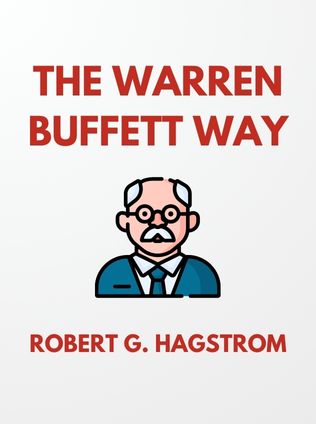
The Warren Buffett Way
Investment Strategies of the World's Greatest Investor
By Robert G. Hagstrom
Published 01/2007
About the Author
Robert G. Hagstrom is an influential figure in the world of investment, known for his ability to distill complex financial concepts into accessible strategies that can be employed by individual investors. As the Chief Investment Officer of EquityCompass, Hagstrom manages over $4 billion in assets, a testament to his expertise and trustworthiness in the financial industry. His career spans decades, during which he has authored eight investing books, each aimed at educating and empowering readers to make smarter investment decisions. His most famous work, "The Warren Buffett Way," is a comprehensive guide that explores the investment philosophy of one of the greatest investors of all time—Warren Buffett. Hagstrom's approach to writing is both educational and inspiring, making complicated concepts understandable without diluting their significance.
Main Idea
"The Warren Buffett Way" is a detailed exploration of Warren Buffett's investment strategy, which emphasizes a disciplined, value-oriented approach to investing. Hagstrom argues that by emulating Buffett’s methods, individual investors can achieve returns that outpace the market. The book delves into Buffett’s process for selecting stocks, which involves a thorough analysis of a company’s financial health, market value, business model, and management quality. Rather than making decisions based on market trends or short-term fluctuations, Buffett’s strategy is rooted in the concept of intrinsic value—the true worth of a company based on its fundamentals. This long-term perspective is contrasted with the more common speculative approaches that often lead to mediocre or even disastrous results.
Table of Contents
- Introduction
- The Influence of Benjamin Graham
- How Buffett Assesses Market Value
- Qualitative Analysis: The Influence of Phil Fisher
- Buffett’s Approach to Portfolio Management
- Psychological Pitfalls in Investing
- Conclusion
The Influence of Benjamin Graham
Benjamin Graham, often referred to as the "father of value investing," was Warren Buffett’s mentor and the primary influence behind his investment philosophy. Graham’s approach to investing was born out of the economic devastation following the stock market crash of 1929, which highlighted the dangers of speculative investing. His philosophy is centered on the idea of "value investing," which involves purchasing securities at prices below their intrinsic value and holding them until the market recognizes their worth.
Graham's method provides a margin of safety, protecting investors from significant losses even if the market does not immediately recognize the value of the investment. For Buffett, this principle was transformative. It taught him to view stocks not as mere tickers on a screen but as pieces of a business, each with a real, calculable value. This perspective shifted his focus from short-term market movements to long-term value creation, a hallmark of his investment strategy.
"For his part, Graham points out that if you buy stock at a discount to its intrinsic value, you’ve gotten a good deal on the stock. Moreover, he argues that because a company’s share price tracks its intrinsic value over the long term, value investing makes it likely that you’ll profit on your investment as the discounted share price increases to match its intrinsic value." - Robert G. Hagstrom
Graham’s influence on Buffett can be seen in several key aspects of his investment strategy:
Sign up for FREE and get access to 1,400+ books summaries.
You May Also Like
The Subtle Art of Not Giving a F*ck
A Counterintuitive Approach to Living a Good Life
By Mark MansonRich Dad Poor Dad
What the Rich Teach Their Kids About Money - That the Poor and Middle Class Do Not!
By Robert T. KiyosakiHow To Win Friends and Influence People
The All-Time Classic Manual Of People Skills
By Dale CarnegieFreakonomics
A Rogue Economist Explores the Hidden Side of Everything
By Steven D. Levitt and Stephen J. Dubner



















